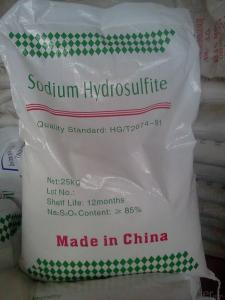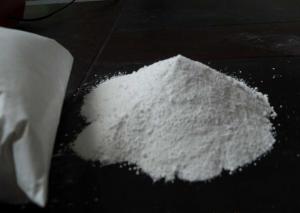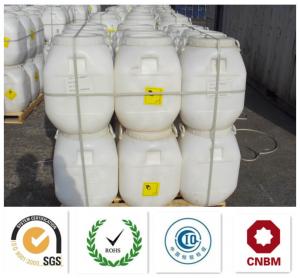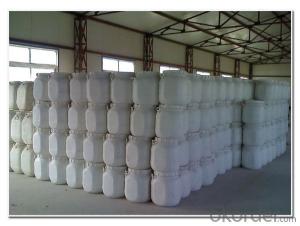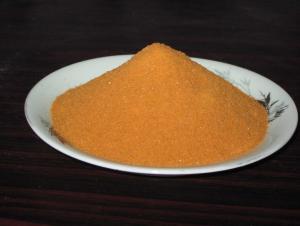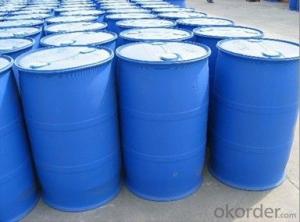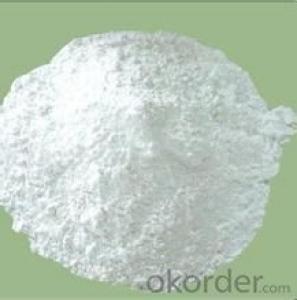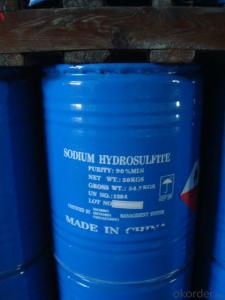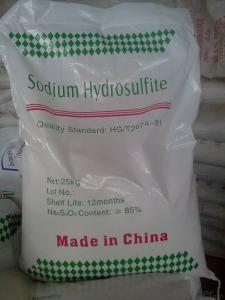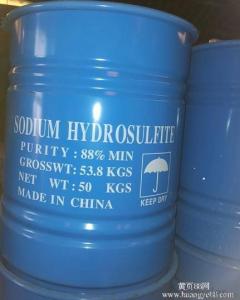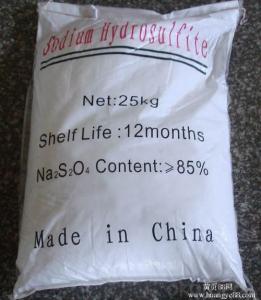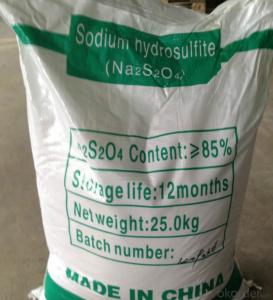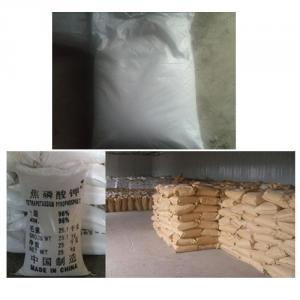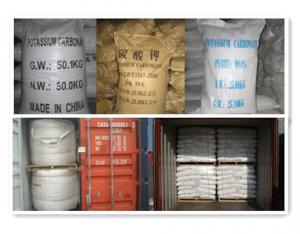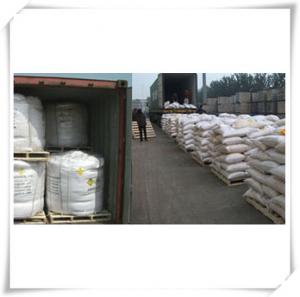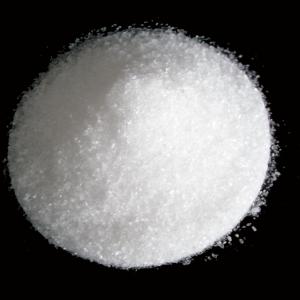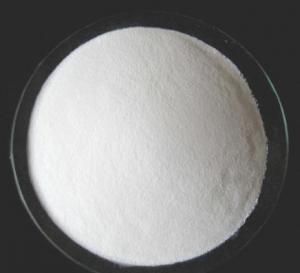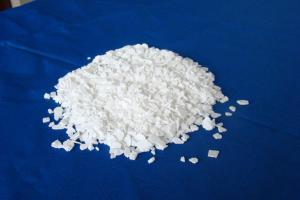Sodium Hydrosulphite with Competitive Quotation and High Quality
- Loading Port:
- Qingdao
- Payment Terms:
- TT or LC
- Min Order Qty:
- 22 m.t.
- Supply Capability:
- 3000 m.t./month
OKorder Service Pledge
OKorder Financial Service
You Might Also Like
1.Structure of Sodium Hydrosulfite Description:
Commodity name: Sodium Hydrosulfite Na2S2O4 Sodium Hydrosulfite Sodium Dithionite Price
Molecular formula:Na2S2O4
Molecular weight:174
CAS Number 7775-14-6
H.S code 28311010
UN number 1384
Class 4.2
2.Main Features of Sodium Hydrosulfite:
1,Widely used in printing and dyeing industry,such as cotton fabrics dyeing auxiliary, silk fabric bleaching.
2,Used as bleaching agent in paper industry
3,Used as bleaching agent,antiseptic agent and antioxidant agent in food industry
4,Used as bleaching agent for soap,oil esters,pulp in light industry
5,Used for producing rongalite,sodium thiosulfate,thiourea,sulfur,benzoic acid,six O(medical),synthetic dyes,also
used copperplate printing,analytical reagent in the chemical industry,etc
6,Used as reducing agent in printing and dyeing industry
3.Sodium Hydrosulfite Images
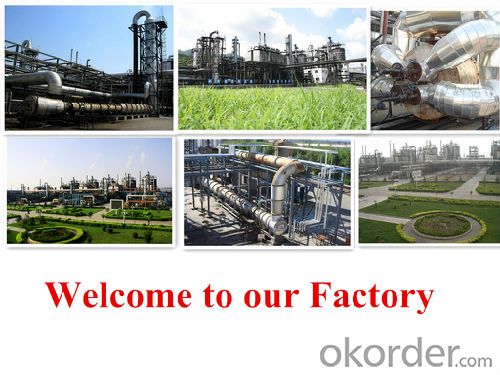

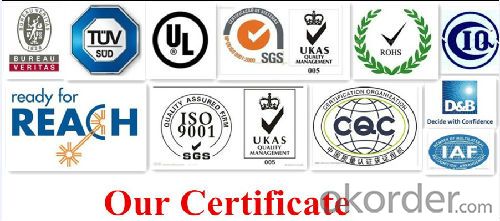
4.Sodium Hydrosulfite Specification
Standard:HG2932-1999
Index | Technical Grade HG/T 2074-2011 | Food Additive GB 22215-2008 | ||
Na2S2O4, | ≥ 90% | ≥ 88% | ≥ 85% | ≥ 88% |
Iron (Fe), | ≤20ppm | ≤ 20ppm | ≤ 20ppm | ≤ 20ppm |
Zinc (Zn), | ≤ 1ppm | ≤ 1ppm | ≤ 1ppm | ≤ 1ppm |
solution appearance | clear | clear | clear | clear |
EDTA, | / | / | / | qualified |
Arsenic(As), | / | / | / | ≤ 1ppm |
Other heavy metal( As Pb), | ≤ 1ppm | ≤ 1ppm | ≤ 1ppm | ≤ 1ppm |
Formate (As HCHO), | / | / | / | ≤ 0.05% |
water insolubles, | ≤ 0.05% | ≤ 0.05% | ≤ 0.05% | / |
Cadmium (Cd) | / | / | / | ≤ 2ppm |
Plumbum (Pb) | / | / | / | ≤ 5ppm |
5.FAQ
1, are you a trade company or factory?
We are a trade company.
2, what is your main product?
My main product is ammonium chloride all grade. We have special advantage in FEED
GRADE.
3, how do you control the quolity?
We do quolity control by the factory testing department. We also can do FDA,BV, SGS or any orther Third-party testing.
- Q: Can inorganic salts be tested by LC / MS?
- LC-MS mass spectrometer for organic matter, inorganic salts can not be atomized not applicable, and will pollute the instrument.
- Q: Inorganic salt of the inorganic salt function
- Although inorganic salts in the cell content is relatively small, but there are many important role. Ca2 + is the animal bone and teeth (containing CaCO3) composition, and blood coagulation and muscle contraction has a regulatory role, if the content is too low, the animal will appear muscle twitch. K + is a variety of enzyme activator, for the plant starch and protein synthesis and animal nerve impulse conduction and muscle contraction also plays an important role. Fe is a component of hemoglobin and cytochrome, and iron-containing enzymes are indispensable when chlorophyll is formed in plants. Another example is Na + for animal heart beat, nerve excitement is indispensable. The various inorganic salts dissolved in the cells have a certain total concentration, such as human body fluid concentration of 0.9%, frogs of 0.65%, which for maintaining cell osmotic pressure, so that cells maintain a certain shape has an important role, too high or Too low will lead to cell due to water or dehydration to change the cell morphology. There are also a number of buffering systems in the body, which are a group which has a neutralizing effect on the added acid or base so that the pH does not change significantly and therefore plays an important role in maintaining the acid-base balance of the cells.
- Q: bonded to an acid molecule called- such as potassium citrate?Thanks
- all metals like potassium,sodium,iron,magnecium etc are minerals
- Q: For patients with ulcerative colitis, which inorganic salt foods can eat?
- Human nutrient needs a variety of inorganic salts (also known as minerals), part of the food from the moving, plant tissue, part of the water and salt. The chemical nature of inorganic salts in food is very stable, not like vitamins as heat, light, oxygen and decomposition of the role of oxidation, but if the processing method is not appropriate, will cause many losses.
- Q: Why is the residue after burning known as coarse ash? And inorganic salt content What is the difference
- GB / T5009.4-2003 "Determination of ash in food" (a) the principle of a certain amount of samples after carbonization into the high temperature furnace burning, the organic matter is oxidized decomposition to carbon dioxide, nitrogen oxides and Water and other forms of escape, and inorganic substances to sulfate, phosphate, carbonate, chloride and other inorganic salts and metal oxide in the form of residual
- Q: What is the most important inorganic salt in plant growth?
- The inorganic salts required by plants are nitrogen, phosphorus and potassium containing inorganic salts, and if any lack of plants will affect the normal growth of plants, nitrogen is a component of many important organic compounds in the body, such as protein, nucleic acid, chlorophyll , Enzymes, vitamins, alkaloids and some hormones contain nitrogen. Nitrogen is also the basis of genetic material in all organisms, the most important protein, it is often in the center of metabolic activity.Now is to limit the growth of plants and the formation of the primary Factor. It also has a significant effect on improving the quality of the product.K2 is dissolved in the plant juice, and its main function is related to the metabolism of the plant.The content of phosphorus in the plant is second only to nitrogen and potassium, Phosphorus plays an important role in plant nutrition. Almost all important organic compounds in plants contain phosphorus. Phosphorus is involved in photosynthesis, respiration, energy storage and delivery, cell division, cell enlargement and other processes in plants.
- Q: An inorganic salt is dissolved in water and yields a solution that has a color. Make a statement about the type of element the substance contains that casuses the color.Thanks!
- Many inorganic salts form colored solutions . pper ( II) sulfate ( Blue ) nickel (II) acetate = green, mangaanse ( II) chloride = pink, iron(III) chloride = yellow, potassium dichromate, orange and so many more Can you be more specific ?
- Q: Now need to determine the freezing point of inorganic salt solution, what kind of freezing point instrument is more accurate?
- The full name of the antifreeze should be called antifreeze coolant, meaning antifreeze function of the coolant, antifreeze can prevent the cold season when the cooling coolant and shrink the radiator and freeze the engine cylinder block, but to correct a misunderstanding, antifreeze Liquid is not only used in winter, the car normal maintenance projects, each driving a year, need to replace the engine antifreeze, special vehicle antifreeze replacement frequency is higher.
- Q: A. oxygen demanding wastesB. organic plant nutrientsC. inorganic plant nutrientsD. water soluble inorganic chemicalsE. sediment
- Acids, D. water soluble inorganic chemicals salts, D. water soluble inorganic chemicals metals E. sediment
- Q: Effects of Minerals on Plants
- Some will be plant death will help some will accumulate
Send your message to us
Sodium Hydrosulphite with Competitive Quotation and High Quality
- Loading Port:
- Qingdao
- Payment Terms:
- TT or LC
- Min Order Qty:
- 22 m.t.
- Supply Capability:
- 3000 m.t./month
OKorder Service Pledge
OKorder Financial Service
Similar products
Hot products
Hot Searches
